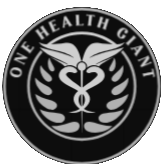Omega-3 intake during pregnancy and breastfeeding is essential for the baby’s neurological and visual development, as well as for its growth. Therefore, adequate intake of this nutrient must be ensured at both stages.
Omega-3s are considered essential fatty acids (EFAs). This means that the body requires them for normal functioning, but cannot synthesize them on its own. This means that they must be obtained through diet and/or supplementation.
This means that the recommended omega-3 requirements are often not met.
For pregnant and breastfeeding women, low levels of omega-3 can have consequences for the health of the mother, fetus, and newborn. Therefore, special attention should be paid to their intake during pregnancy and breastfeeding.
It is important to remember that during pregnancy, all of the fetus’s nutrition comes from the mother through the placenta.
After birth, and if breastfeeding is chosen, the mammary glands produce milk based on the mother’s diet and reserves.
Thus, a woman’s diet at both stages has an impact on her baby’s nutrition.
Omega-3 requirements are especially significant from the third trimester of pregnancy until the age of two.
Although omega-3 intake during pregnancy and breastfeeding should be adequate at all times, it is known that the most critical stages in brain structure formation occur during the third trimester and continue for up to two years after birth.
For this reason, the requirements for this nutrient are especially considerable during this period.
Of all the omega-3 fatty acids, docosahexaenoic acid (DHA) is the most important in neonatal development.
Omega-3s in pregnancy
The benefits of omega-3 during pregnancy in terms of children’s cognitive development have been demonstrated in various studies.
In these cases, it has been observed that consuming adequate amounts of fish during pregnancy results in children with better visual memory and greater verbal intelligence.
Omega-3s also appear to have a beneficial effect on the visual tissue of newborns. In this regard, one study found that newborns whose mothers consumed fish oil during pregnancy showed visual acuity similar to that of 6-month-old infants whose mothers did not consume it.
Omega-3s, and specifically DHA during pregnancy, also appear to have a positive effect on pregnancy length, newborn weight, and the prevention of preeclampsia (high blood pressure in women during pregnancy). These benefits are also shared with vitamin D, another essential nutrient during pregnancy.
Finally, increased omega-3 intake has also been linked to improved postural, motor, and social function in premature babies.
The omega-3 dose during pregnancy should ensure a daily intake of at least 200 mg of DHA. This amount is equivalent to eating oily fish twice a week. It can also be obtained through dietary supplements containing this ingredient.
In this sense, the most interesting foods rich in omega-3 for pregnant women are oily fish with very low or low mercury content (anchovies, salmon, sardines, canned light tuna, etc.), vegetable oils, fish oil (a source of DHA), eggs, and meat.
Beyond an inadequate diet lacking omega-3s, there are other circumstances that can alter the transfer of these nutrients across the placenta.
These include a disproportionate intake of essential fatty acids (low intake of omega-3 compared to omega-6 and omega-9), closely spaced or multiple pregnancies, and maternal complications during pregnancy, such as diabetes and cardiovascular or kidney disease.
In these cases, fatty acid reserves can decrease considerably and affect the supply received by the fetus.
Considering the importance of omega-3 during pregnancy, potential nutritional deficiencies should be assessed during the first trimester to determine the necessary dietary changes.
It is sometimes recommended to increase DHA intake even in the preconception stage to ensure adequate reserves.
Omega-3s in breastfeeding
Breast milk provides all the nutritional requirements of the newborn, and its composition is appropriate for the infant’s age.
This happens because the mother’s body always prioritizes the baby’s needs, and regardless of her nutritional status, the baby receives most of the essential nutrients for development. However, it must be taken into account that this does so at the expense of the mother’s reserves.
This means that women who do not maintain a proper diet may be at risk of deficiencies in vitamins, minerals, and other much-needed nutrients.
In addition, the mother’s reserves may be severely depleted as a result of pregnancy and childbirth.
This is why good nutrition during breastfeeding is essential for both the woman and her babies.
Regarding the role of omega-3s at this stage, DHA is directly related to the optimal development of the brain, retina, and hearing in infants.
Thanks to their anti-inflammatory and immune-supporting properties, omega-3s during breastfeeding may also play an important role in preventing allergies and controlling autoimmune diseases.
At the same time, these fatty acids appear to have a protective effect against postpartum depression.
For all these reasons, ensuring an optimal amount of DHA during breastfeeding is essential.
It should be noted that during breastfeeding, the mother loses 70-80 mg of DHA through milk, in addition to the amounts used to meet her demands for these fatty acids.
Thus, in conditions of low omega-3 intake, the child’s intake may also be deficient.
The positive aspect is that breast milk lipids are the most variable components in terms of their content and quality. Furthermore, the distribution of the fat spectrum is sensitive to the mother’s diet. This implies that a woman’s diet may have a beneficial effect on the DHA content of her breast milk.
Generally, the recommendations are the same as those for pregnancy. Breastfeeding women are advised to regularly incorporate omega-3-rich foods into their diet to ensure at least 200 mg/day of DHA.
However, it is common to recommend supplementation at this stage due to the high demand for DHA during lactation and the possibility of reaching the end of pregnancy with depleted fatty acid reserves.
Focus on ensuring a sufficient amount of omega-3 during breastfeeding should be maintained until children can include foods rich in these essential fatty acids through complementary feeding.
This is especially important in certain circumstances, such as with premature babies.
It’s worth noting that currently marketed infant formulas also provide sufficient and well-balanced amounts of essential fatty acids. However, breastfeeding for at least six months indeed ensures higher DHA levels than consuming artificial formulas.























+ There are no comments
Add yours